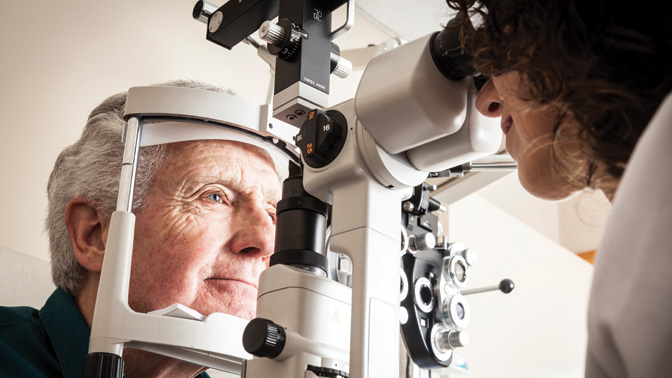
A research team led by Krembil Research Institute scientists has identified a new neuroprotective factor that has the potential to help people suffering from the common blinding disease glaucoma.
“This discovery provides hope that we can devise a new strategy for protecting the vision of glaucoma patients,” said Krembil Scientist Dr. Jeremy Sivak, who holds the Glaucoma Research Chair at the Donald K. Johnson Eye Institute at UHN and is Associate Professor at the University of Toronto.
Dr. Sivak’s research team was assisted by Dr. John Flanagan and Dr. Karsten Gronert of the University of California, Berkeley and the findings were published in the Journal of Clinical Investigation.
The team identified a lipid molecule called LXB4 that protects neurons against the harmful effects of glaucoma in preclinical models. “We found that this tiny lipid molecule is normally present in healthy eyes and acts as a neuroprotective signal,” said Dr. Sivak. “Healthy eyes produce LXB4, but in diseased eyes its levels are reduced. We showed that by restoring LXB4 we can preserve injured nerve cells from dysfunction and death.”
Glaucoma is a progressive neurodegenerative disease of the optic nerve that is irreversible and can eventually lead to blindness. It affects more than 400,000 Canadians and 70 million people worldwide. Although there is no known cure, a key strategy to develop new treatments for glaucoma, and for other neurodegenerative conditions, is to find ways to preserve the survival of nerve cells.
“A particularly exciting part of this discovery is that we don’t think this effect is limited to glaucoma,” said Dr. Sivak. “This neuroprotection extends to the central nervous system and could be applicable to a host of other neurodegenerative diseases.”
Next steps for the research team include further investigation of the underlying mechanisms that control levels of the LXB4 molecule, and designing a practical method to restore levels of the molecule to treat disease. Researchers also plan to explore the potential application of this discovery to other conditions, such as Alzheimer’s Disease and Parkinson’s Disease.
Source: UHN.ca
Funding for this study was provided by the Canadian Institutes of Health Research, The Natural Sciences and Engineering Research Council of Canada, the National Institutes of Health and the Toronto General & Western Hospital Foundation.
Livne-Bar I, Wei J, Liu HH, Alqawlaq S, Won GJ, Tuccitto A, Gronert K, Flanagan JG, Sivak JM. Astrocyte-derived lipoxins A4 and B4 promote neuroprotection from acute and chronic injury. J Clin Invest. 2017 Nov 6. pii: 77398. doi: 10.1172/JCI77398.

Glaucoma is caused by pressure buildup in the eye that damages the optic nerve. An eye exam (pictured) can help diagnose glaucoma before the appearance of advanced symptoms, such as tunnel vision (loss of peripheral vision).

